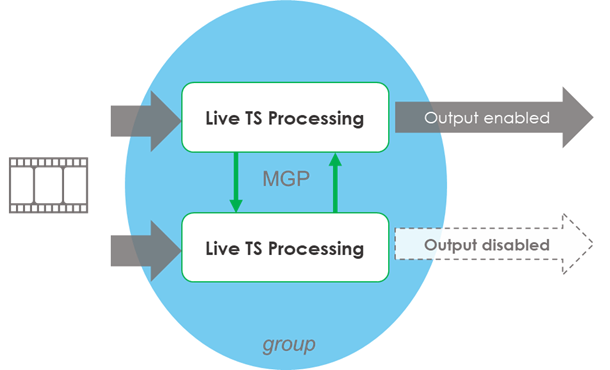General parameters
Upon creating a Prisma TS Splicer service, the General. tab is the first to appear. It gathers general settings for redundancy and common network interfaces used for communication with Ad servers and POIS components.
Configure dual output prevention
The dual output prevention feature safeguards against duplicate media multicast on the same network. This is particularly useful in scenarios with active/active encoders. This functionality leverages the Multicast Guard Protocol (MGP) and according to the following principles:
- Point-to-point communication between both encoders, utilizing multicast messages over a dedicated port.
- Constant check so only one encoder has its output enabled at any given time.

By default, the first active TS processing instance will have its output enabled.
To set up dual output prevention:
- Check the Activate checkbox.
- Network interface: Specify the network interface for dual output prevention.
- Address: Define the multicast address for communication.
- Port: Set the designated port.
- Group name: A group encompasses a pair of Prisma TS Splicers under dual output prevention. Use this field to identify the group.
Configure server variant
Initiating a server variant is straightforward: simply check the Activate checkbox. This action will auto-generate both primary and secondary variants.
Configure network interfaces
Prisma TS Splicer orchestrates communication with various decision-making entities, notably the Ad Decision Server (ADS) and the POIS component for blackout and alternate content decisioning.
To configure network interfaces:
- ESAM Network interface: Specify the name for the interface used to communicate with the POIS
- VAST Network interface: Designate the interface for VAST, typically an interface with public internet access.
- SCTE-30 Network interface: Define the interface for SCTE-30, which communicates with an Ad Server.